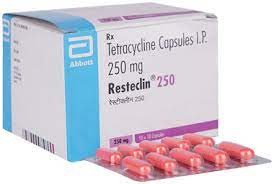A nurse is caring for a client who is prescribed tetracycline 2 grams daily PO in four divided doses every 6 hr. Available is tetracycline 250 mg capsules. How many capsules should the nurse administer per dose? (Round the answer to the nearest tenth. Use a leading zero if it applies. Do not use a trailing zero.)
The Correct Answer is ["2"]
To calculate the number of capsules that the nurse should administer per dose, the nurse should first divide the total daily dose of tetracycline by the number of doses per day. This gives the dose per administration:
2 grams / 4 doses = 0.5 grams per dose
Next, the nurse should convert the dose from grams to milligrams, since the available capsules are in milligrams. There are 1000 milligrams in one gram, so the nurse should multiply the dose by 1000:
0.5 grams x 1000 mg/g = 500 mg per dose
Finally, the nurse should divide the dose in milligrams by the strength of each capsule, which is 250 mg. This gives the number of capsules that the nurse should administer per dose:
500 mg / 250 mg/capsule = 2 capsules per dose
Therefore, the nurse should administer 2 capsules of tetracycline every 6 hours to the client.

Nursing Test Bank
Naxlex Comprehensive Predictor Exams
Related Questions
Correct Answer is C
Explanation
Sharing personal information can blur the professional boundaries and might not be effective in reducing the client's suspicion. It's important to maintain a professional demeanor while building trust.
B) Approach the client frequently throughout the day for brief interactions:
While it's important to establish a presence and provide support, approaching the client too frequently might increase their discomfort and reinforce their suspicion. It's better to allow the client some personal space while ensuring they know you are available when needed.
C) Adopt a neutral attitude when providing care.
Explanation:
When dealing with a client who is extremely suspicious, it's important for the nurse to approach the situation with a neutral attitude. A neutral attitude helps to build trust and minimize any potential triggers for the client's suspicion. This approach creates a non-threatening environment where the client may feel more comfortable and gradually begin to open up.
D) Wait for the client to initiate interaction:
While giving the client space is important, waiting for them to initiate interaction might prolong the development of a therapeutic relationship. Clients who are extremely suspicious might have difficulty initiating interactions due to their concerns.
Correct Answer is D
Explanation
A. Joining a group discussion about a local election: While group discussions can be productive, a person in the manic phase of bipolar disorder may have difficulty focusing and may become overly talkative or agitated. Engaging in a group discussion about a local election may exacerbate their symptoms and lead to increased energy and agitation.
B. Watching a video with a group in the day room: Watching a video in a group setting may not be suitable for a person in the manic phase, as they might find it hard to sit still and concentrate. The fast-paced and changing nature of videos may contribute to increased restlessness and agitation.
C. Participating in a basketball game in the gym: Engaging in physical activities like basketball can be too stimulating for someone in the manic phase. Their heightened energy levels may cause them to become overly competitive, agitated, or impulsive, potentially leading to risky behavior or increased symptoms.
D. Walking with the nurse in the courtyard: Taking a walk in a calm and soothing environment, such as a courtyard, can help a person in the manic phase expend excess energy in a controlled manner. Walking provides physical activity without overstimulating or overwhelming the individual, making it a more appropriate choice to address boredom while managing their symptoms.
Whether you are a student looking to ace your exams or a practicing nurse seeking to enhance your expertise , our nursing education contents will empower you with the confidence and competence to make a difference in the lives of patients and become a respected leader in the healthcare field.
Visit Naxlex, invest in your future and unlock endless possibilities with our unparalleled nursing education contents today
Report Wrong Answer on the Current Question
Do you disagree with the answer? If yes, what is your expected answer? Explain.
Kindly be descriptive with the issue you are facing.
